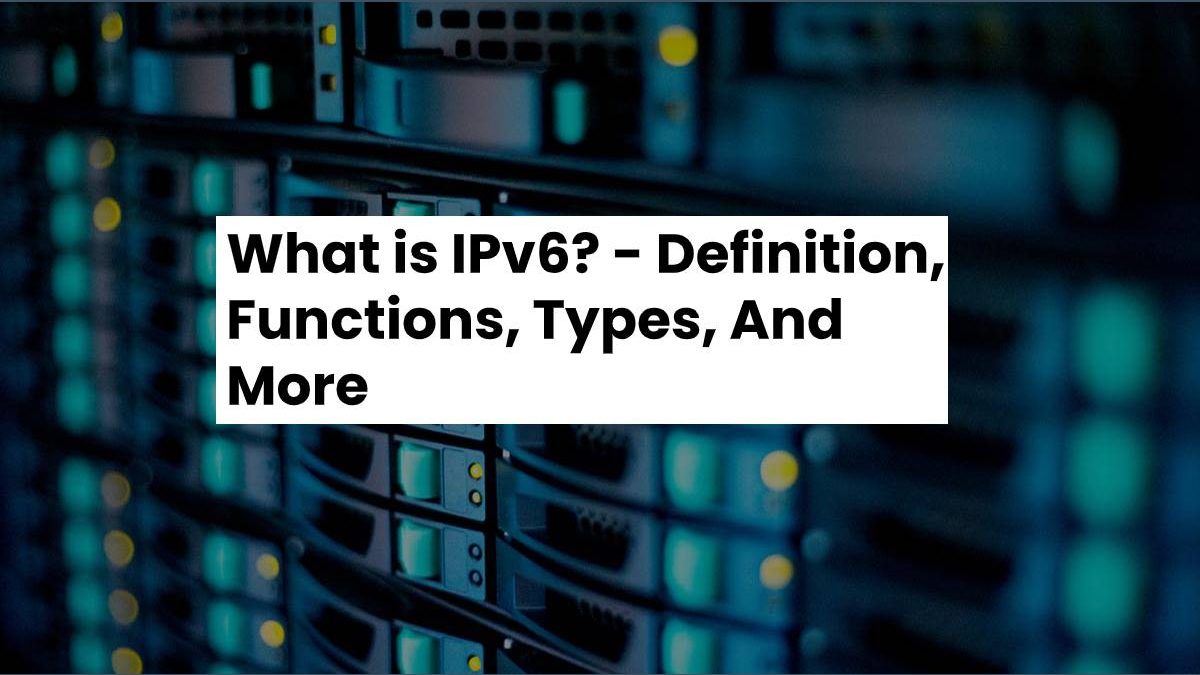Table of Contents
Definition Internet Protocol IPv6
IPv6 is the latest edition of the Internet Protocol, the communications protocol that provides an identification and location system for computers on networks and routes traffic across the Internet.
IPv6 (Internet Protocol version 6) is the latest version of the Internet Protocol. It is a communication protocol that provides an identification and location system for computers or devices on networks and routes traffic through the Internet. This version of the Internet Protocol is a set of specifications from the Internet Engineering Task Force that is an updated version of IPv4. Since it is the latest version, it is useful to identify different devices on the Internet. IPv6 is also referred to as the “Next Generation Internet” because it expands capabilities, and the growth of IPv6 will allow current development to go through more recent and modern large-scale deployments.
This version uses 128 bits, unlike IPv4, which only uses 32 bits for the IP address.
Essential Similar Characteristics between IPv6 and IPv4
Different devices currently use IPv6 as the source and the destination address for passing packets across a network, and tools such as pinging for network testing such as what users also do with IPv4 with minimal variations. [2] IPv6 has been working for years to address IPv4 address failures and drops.
Functionality
The latest IPv6 version uses a unique feature called auto configuration; it is to find and assign the IP address settings to the hosts on the network. It is like DHCPv6, and it can also be stateless. This unique feature helps in such a way that it allows different devices on a network to address themselves with a link-local unicast address. It is a common idea that each device on an Ethernet network has an interface address.
The process begins with the network router that gets the network device, the prefix interface address, or the physical address of the Mac. It continues by adding your prefix interface address. Remember, at all times, that the IPv6 address is 64 bits long, and the Mac address is 48 bits.
Therefore, there are 16 additional bits, and these 16 extra bits will add in the center of the mac address with the FFFE to complete the auto-configuration function of the IPv6 address of the Ethernet device. Therefore, IPv6 has got well equipped with enhanced features and unlimited opportunities, unlike IPv4.
Types of IPv6 addresses
Global Unicast address
Global Unicast address is globally unique on the Internet; it is similar to public IPv4 addresses. It can route on the Internet and has two parts:
- a subnet ID
- an interface ID
the address format is the same as an IPv6 anycast address assigned by the Internet Number Assignment Authority (IANA).
Unique local address
This address is similar in purpose to the private IPv4 address; it can get using within a company on multiple sites. You cannot route it on the public Internet. This address is the substitution of the local address of the site, which allows communication within site; at the same time, we can route it to several local networks.
Unicast address
It refers to the one-to-one IPv6 address; the packet address to a unicast address meant for a single interface.
Anycast
It is similar to a multicast address, with only a slight difference. It is used to route packets destined for multiple interfaces but sends packets to the first interface that it will find as defined in the routing distance.
Local link address
This address refers to a private address that cannot get routed on the Internet. This type of IPv6 address can be used locally by private or temporary local area networks (LAN) to share and distribute files among different devices on the LAN.
Multicast address
It refers to many. With this type, packets get delivered to all interfaces that will be identified by the multicast address.

